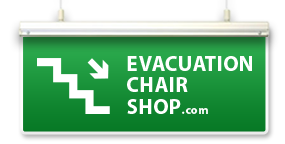5 People Who May Need an Evacuation Chair31 March 2016 A question often asked when one considers purchasing an evacuation chair is “How many chairs do I need for my environment?”. The answer is that there is no answer! There is no set guideline - it all depends on your own individual risk assessment. A general rule of thumb is that one chair will serve one person on one floor. However this all depends on factors specific to your environment and the people in it. Just as there’s no one answer of how many chairs you may need, there’s no one specific person who should be using the chair. A common misconception is that evacuation chairs are designed solely for wheelchair users, leading many employers to wrongly believe they do not require one if there are no wheelchair users in the office. In fact, evacuation chairs can serve a multitude of people*, from those who require a wheelchair or walking aid, to those who are usually physically able. Read on to learn more! *It’s important to note that each person is different and whether they can safely and comfortably use an evacuation chair always depends on an individual risk assessment. Wheelchair UsersEvacuation chairs are designed to be compatible with wheelchair users. The Evacusafe Excel Model, for instance, features weight bearing arm rests, ideal for those who rely on upper arm strength to manoeuvre themselves. These arm rests can also lift up, making it easier to transfer a person from wheelchair to evacuation chair when the two are placed side by side. If there is an emergency situation in a multi-storey building and the lift is out of action, evacuation chairs ensure wheelchair users are still able to quickly get down the stairs and to safety. The same applies to anyone with a physical impairment that makes it more difficult to quickly descend stairs. This includes those on crutches, who use a walking stick or those with prosthetic lower limbs. Pregnant WomenIf you are heavily pregnant you may be unable to exit a building briskly, especially if there are several flights of stairs. Quickly making your way down numerous staircases could put unnecessary stress on you and your baby, especially if you are already under the pressure of an emergency situation. An evacuation chair solves this problem, allowing the user to smoothly descend under the careful control of a colleague. With many women choosing to work into full-term pregnancy, it’s important for employers to consider how they will safely evacuate when lifts are not an option. The ElderlySimilarly, an elderly person may be less physically able to promptly evacuate. Many elderly people are retired and thus this may not apply to your workforce, but it is important in regard to shops and businesses that have customers coming into the building. In an emergency situation, you don’t want anyone to be left behind. However, those who are frailer are at greater risk of becoming stuck, especially if people around them are panicked and distracted. The Injured or UnwellThere’s no telling when someone could become immobilised in an emergency. Perhaps they’ve fainted due to shock, hurt their ankle whilst rushing to exit the building, or even something more serious such as passing out due to smoke inhalation. Whatever the reason, this person is unable to get down the stairs on their own: what are you going to do about it? (We think you know the answer by now!) You!If none of the above applies to you and you are usually physically able, you’ve probably never considered having to use an evacuation chair before. But the fact is, there is no one person who needs an evacuation chair: it could apply to any of us. Suddenly finding yourself or another person incapacitated is something out of your control. You cannot prepare for this, but what you can do is take steps to ensure that person is able to evacuate the building should there be an emergency. Explore the range of chairs available on Evacuation Chair Shop now! |
|
£0.00  Need Some Advice? 020 7501 1103  |
